Australia is the 6th largest country in the world (about 7.59 million km 2 ) but has a population of just over 26 million people. Compared to the US with a total population of over 333 million people, the two states of California (39 million people) and Texas (29 million people) have a larger population than the whole of Australia.
Another comparison, the population of England alone is 56 million, not including the rest of the UK, more than double the population of the whole of Australia.
More strangely, some cities around the world now have larger populations than Australia. Megacities and their surrounding areas such as Shanghai (China), Jakarta (Indonesia), Delhi (India), Tokyo (Japan) all have larger populations than Australia, according to historicplay.com .
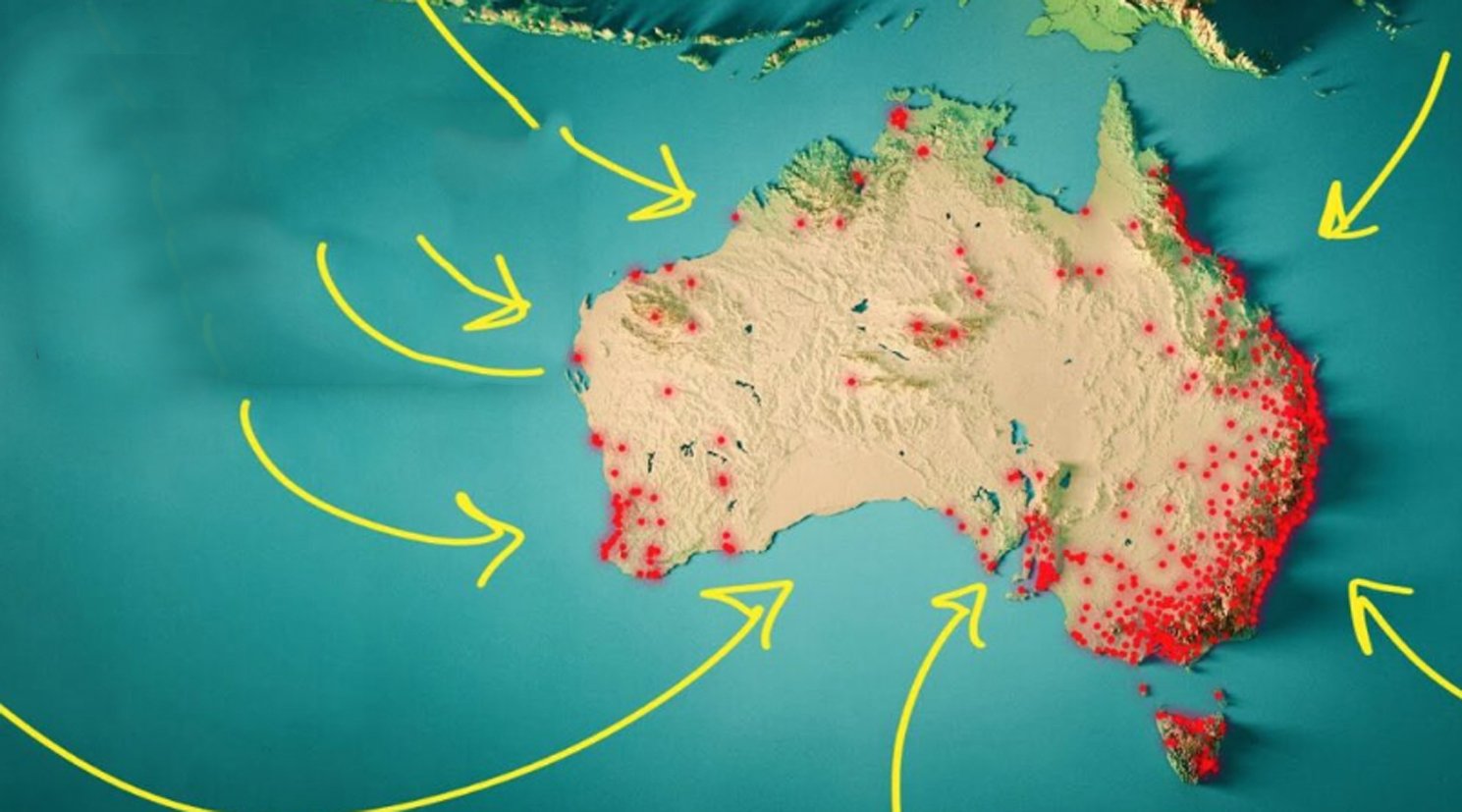
The red areas on the map are where the majority of Australia's population lives.
Australia actually has only five major cities, all located on the coast: Sydney, Melbourne, Brisbane, Perth and Adelaide, which are home to around two out of three Australians. As a result, Australia is one of the most urbanised countries in the world, with 90% of the population living in densely populated cities that cover just 0.22% of the country’s total geographical area. The red areas on the map are where the majority of Australians live.
Around 85% of all Australians live within 50km of the coast, meaning that hardly anyone ventures further into the vast interior. This unusual population distribution leads to some fascinating oddities across the continent. For example, the Western Australian county of East Pilpara is about the size of Japan but has just over 10,000 people, half of whom live in Newman.
With over 1.3 million residents, Adelaide is Australia's fifth largest city. Surrounding the metropolis is an area the size of France, but home to just 3,750 people, giving it a population density equivalent to 178 square kilometres of land per person.
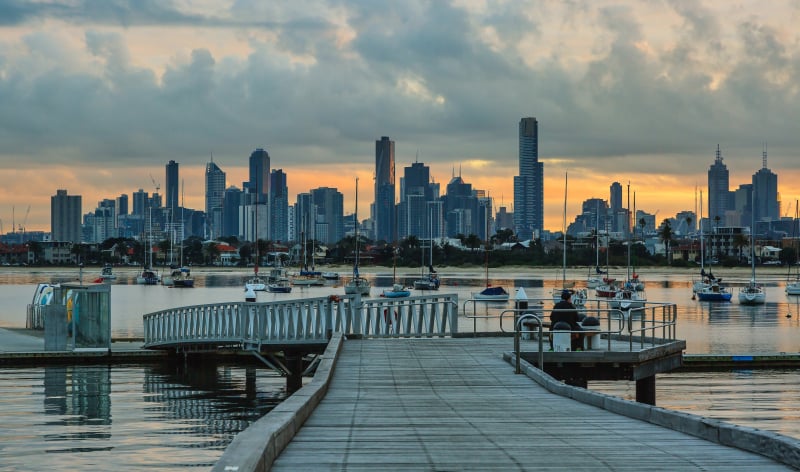
Melbourne has the largest population in Australia (5 million people) but just over half that of New York City (8.5 million people)
According to government statistics, Australia's average population density is 3.3 people/km 2 , while India has an average population density of 464 people/km 2. Melbourne has the highest population density in Australia with 22,400 people/km 2 , while New York City (USA) has a population density of more than 38,000 people/km 2 .
Harsh climate
Today, about 40% of the continent's land area has been severely altered by intensive land use and deforestation since European settlement, with a significant proportion of what remains fragmented and overgrown with weeds.
Anna Creek is not a country or even a government organization, but it is the largest privately owned cattle ranch in the world, according to Wikipedia. At 23,677 square kilometers, Anna Creek Ranch is larger than Israel but employs only eight full-time workers. As a result, the massive area is often home to just a handful of people and about 10,000 cows.

Deserts cover most of Australia.
So why is Australia so deserted, and what is it about this continent that allows all of the above to be possible?
After all, everyone knows that Australia is covered in vast, ancient deserts filled with super-dangerous animals and insects, so those who really want to live in most of the country have to stay away.
But the full explanation for why so few people live in Australia is quite complex. Much of the problem stems from the fact that Australia is particularly “cursed” from a geological and geographical perspective, as it is located near the year-round frozen Antarctica. The west is constantly affected by cold ocean currents coming from the vast southern ocean.
Across Australia's vast inland west, a so-called "rain shadow" is created by the country's fifth-longest mountain range, which runs east from north to south. The height of the range prevents many rain-bearing clouds from moving further into Australia from the Pacific Ocean .
A significant portion of northern Australia lies in the tropics, which means that very few high mountains anywhere on the continent are actually capable of pushing air up, where it can cool and turn into rain. So it’s no surprise that some of the worst bushfires in Australia’s history have occurred.
Looking at a map of average annual rainfall in Australia, it can be seen that the majority of the continent’s rainfall falls on the east coast. As a result, the arid climate conditions that gradually form deserts exist over about 35% of Australia’s total land area.
Darwin, the largest city on Australia’s north coast, receives an average of more than 1,800 mm of rainfall each year, nearly three times the amount in London. However, most of that rain falls during the four-month wet season from December to March, when the monsoons hit.
Northern Australia has some of the most erratic rainfall on record on Earth, largely due to unpredictable tropical cyclones. In 1898, a storm dumped an incredible 740mm of rain on this small town in northern Australia in a single day.
But decades later, in 1924, without any cyclones or hurricanes reaching the interior, the town received just 4 mm of rain, less than the average annual rainfall in the Sahara Desert. The scarcity of fresh water in the region is not only due to unpredictable rainfall but also due to the lack of large rivers.
The average annual flow of the Mississippi River in the United States is more than 22 times the annual flow of Australia's largest river system.
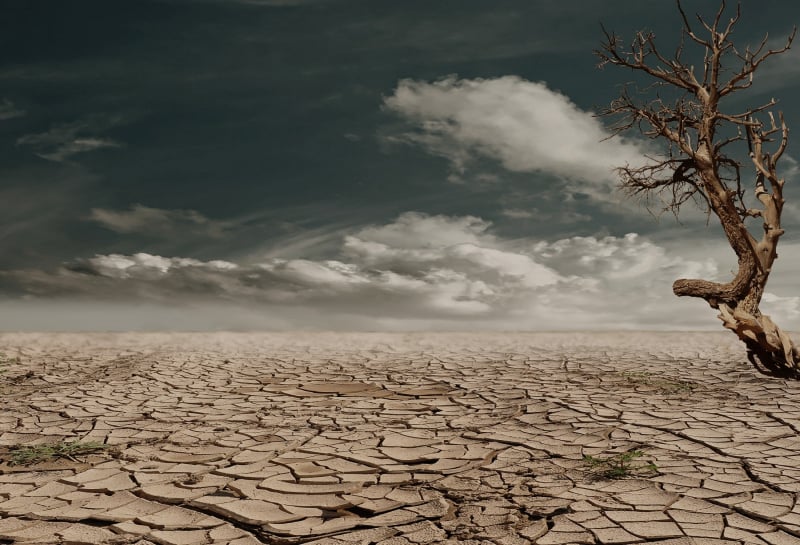
Drought is one of the causes of environmental degradation in Australia.
With rainfall already scarce in much of the region due to higher temperatures, water is becoming increasingly scarce. Some areas sometimes go completely dry for months at a time. Sustaining Australia’s large population is extremely difficult due to the lack of good land for farming and the lack of water.
Immigration restrictions
In the early 1990s, Australia had a net migration rate of more than 35,000 people per year. The average for the 20th century was 52,000 people per year.
Unlike the US, Australia did not want to become a giant manufacturing country and accept waves of immigration. So, when Australia became a developed country, the Australian government was very strict about immigration.
Throughout the 20th century, Australia strictly enforced the White Australia policy until the 1970s, making it difficult for immigrants from any non-white background to immigrate. Australia gradually changed, with immigrants being granted visas based on the job they were applying for. Essentially, an unskilled person could not immigrate unless they were married to an Australian citizen.
While developing countries face population explosions, and many developed countries are now rapidly increasing their immigration numbers, Australia is keeping that from happening.
Source link






























![[Photo] National Assembly Chairman Tran Thanh Man visits Vietnamese Heroic Mother Ta Thi Tran](https://vphoto.vietnam.vn/thumb/1200x675/vietnam/resource/IMAGE/2025/7/20/765c0bd057dd44ad83ab89fe0255b783)


































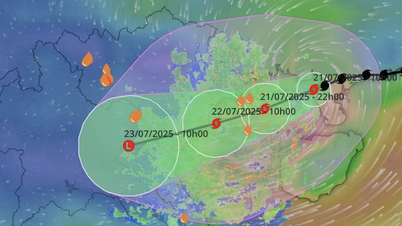











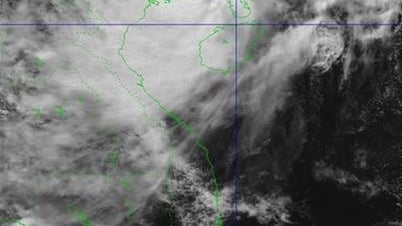























Comment (0)